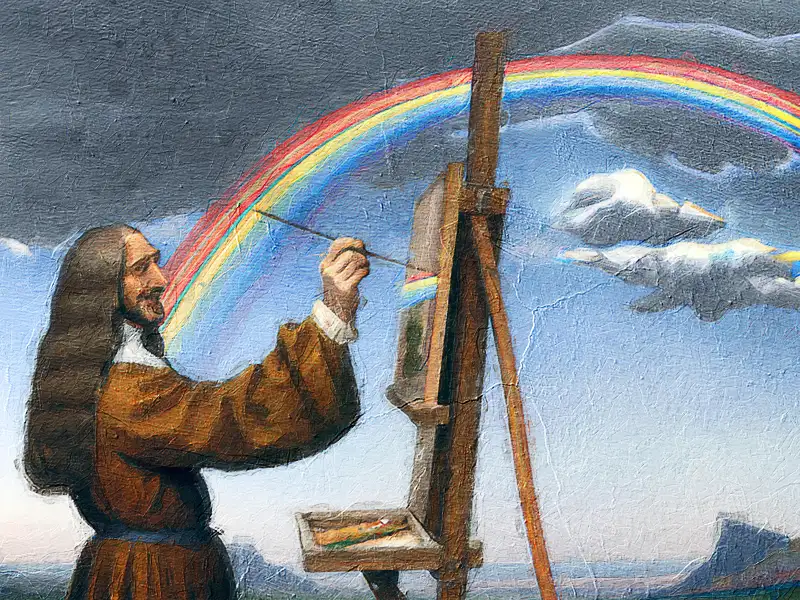Rainbows in art and literature
Rainbows have long been a source of inspiration for artists and writers around the world. They have been depicted in art and literature in a variety of ways, and have taken on different meanings and significance in different cultures and time periods.
In this article, we’ll take a closer look at the history of rainbows in art and literature. We’ll explore how rainbows have been depicted and interpreted in different cultures and throughout the ages, and we’ll see how they have inspired artists and writers to create beautiful and meaningful works of art.
So let’s dive into the colorful world of rainbows in art and literature!
Ancient examples of rainbows in art and literature
Rainbows have been depicted in art and literature for centuries, and many ancient cultures had their own interpretations of what rainbows meant and how they were created.
In ancient Greek mythology, the rainbow was seen as a bridge between the mortal world and the gods. It was thought to be created by the messenger god Hermes, who used it to travel between the two worlds. The rainbow was also associated with the god Iris, who was said to be the personification of the rainbow and the messenger of the gods.
Rainbows were also depicted in ancient art and literature from other cultures. In ancient Chinese mythology, the rainbow was seen as a bridge between heaven and earth and was thought to be a symbol of good luck. In ancient Native American cultures, rainbows were thought to be a sign of good luck and a promise of a good future, and they were also seen as a way for the spirits to communicate with the living.
Ancient Egyptians also had their own ideas about rainbows. They believed that rainbows were a symbol of the afterlife and a way for the gods to communicate with the mortal world. They often depicted rainbows in their art and literature as a way to honor the gods and celebrate the beauty of the natural world.
Overall, rainbows have played a significant role in art and literature throughout history, and they have been interpreted and depicted in a variety of ways by different cultures and time periods.
Rainbows in modern art and literature
Rainbows continue to be a source of inspiration for artists and writers in modern times. They are often depicted in art, literature, and other forms of media as a symbol of hope and a reminder of the beauty of the natural world.
One example of rainbows in modern art is the rainbow flag, which has become a symbol of the LGBTQ+ community and a representation of diversity and acceptance. The rainbow flag was created by Gilbert Baker in 1978, and it has since become an iconic symbol of the LGBTQ+ community.
Rainbows have also been depicted in modern literature in a variety of ways. For example, the children’s book “The Rainbow Fish” by Marcus Pfister tells the story of a rainbow fish who learns the value of sharing and friendship. The book has been translated into more than 60 languages and has become a beloved classic around the world.
Rainbows have also been depicted in modern art and literature as a symbol of hope and a way to bring beauty into the world. For example, the poem “The Road Not Taken” by Robert Frost includes the line “And that has made all the difference”, which is often associated with the idea of taking the road less traveled and finding hope in the unknown.
Overall, rainbows continue to inspire artists and writers in modern times, and they are often depicted as a symbol of hope and a reminder of the beauty of the natural world.
The symbolism of rainbows in art and literature
Rainbows have been used as a symbol in art and literature for centuries, and they have taken on different meanings and significance in different cultures and time periods.
One common theme in the symbolism of rainbows is hope and renewal. Rainbows are often depicted as a symbol of hope and a reminder of the beauty of the natural world. They are seen as a way to bring beauty into the world and to inspire people to look for the good in life.
Rainbows have also been used as a symbol of divine intervention and a promise from God. In many cultures, rainbows have been seen as a way for the gods to communicate with the mortal world and to offer hope and guidance to those who seek them.
Another common theme in the symbolism of rainbows is that of diversity and acceptance. The rainbow flag, which is a symbol of the LGBTQ+ community, is a good example of this. The rainbow flag represents the diversity of the LGBTQ+ community and promotes a message of acceptance and inclusivity.
Rainbows have also been used as a symbol of transformation and change. In some cultures, rainbows are seen as a symbol of the end of one thing and the beginning of something new. They are seen as a way to mark the passage of time and celebrate the beauty of the natural world.
Overall, rainbows have taken on many different meanings and significance in art and literature throughout history. They are often depicted as a symbol of hope, renewal, divine intervention, acceptance, and transformation, and they continue to inspire people all around the world.
